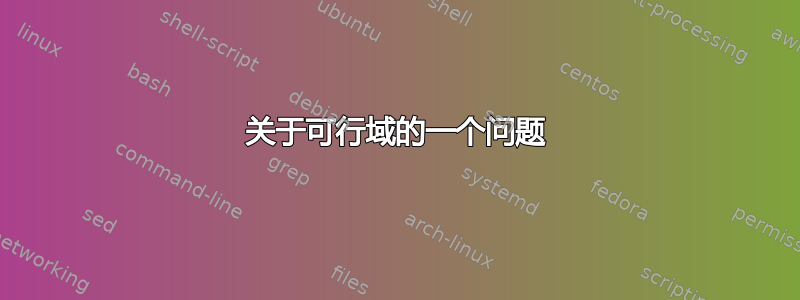
我在命名由下面的 LaTeX/TikZ 代码确定的可行区域的角点时遇到了困难,谁能帮助我。
\begin{figure}[htpb]
\centering
\begin{tikzpicture}
\draw[gray!50, thin, step=0.5] (-2,-2) grid (14,14);
\draw[very thick,->] (-2,0) -- (14,0) node[right] {$x$};
\draw[very thick,->] (0,-2) -- (0,14) node[above] {$y$};
\foreach \x in {-2,...,14} \draw (\x,0.5) -- (\x,-0.5) node[below] {\tiny\x};
\foreach \y in {-2,...,14} \draw (-0.5,\y) -- (0.5,\y) node[right] {\tiny\y};
\fill[blue!50!cyan,opacity=0.3] (0,0)-- (0,5) -- (6,11) -- (8,10) --(13,0) --cycle;
\put(0,0){A}\put(0,5){B}\put(6,11){C}\put(8,10){D}\put(13,0){E}
\draw (-2,3) -- node[above,sloped] {\tiny$-x+y\leq5$} (9,14);
\draw (6,14) -- node[above,sloped] {\tiny$2x+y\leq26$} (14,-2);
\draw (0,14) -- node[above right,sloped] {\tiny$2x+4y\leq56$} (14,7);
\end{tikzpicture}
\caption{Feasible Region of the problem}
\label{fig:ch3:c2}
\end{figure}
答案1
正如 percusse 在他的评论中所说:\put与 TikZ 图片无关。
您可能想要使用\node(带文本)或\coordinate(以名称保存坐标)。我结合使用了两者(以及一个循环来保存 TikZ 宏和我的想法)。
首先将实际点数以名称保存 ( A, B, …):
\coordinate (<name>) at (<x>, <y>);
并借助label选项添加一个节点,以便读者可以通过名称识别点。除了选项之外label,我还可以\node添加文本。
\foreach \x/\y/\t/\p in {0/0/A/below left,
0/5/B/above left,
6/11/C/above,
8/10/D/below left,
13/0/E/above right}{% as two commands are used, those need to be
% enclosed in { } so that they both are looped.
\coordinate (\t) at (\x,\y);
\node[\p] at (\t) {\t};
}
在\fill命令中我使用了存储的坐标名称。
在第二个示例中,我使用了库intersections让 TikZ 找到正确的点。现在您可以更改线条,TikZ 会为您完成其余工作。
代码
\documentclass[tikz]{standalone}
\usetikzlibrary{intersections}
\begin{document}
\begin{tikzpicture}
\draw[gray!50, thin, step=0.5] (-2,-2) grid (14,14);
\draw[very thick,->] (-2,0) -- (14,0) node[right] {$x$};
\draw[very thick,->] (0,-2) -- (0,14) node[above] {$y$};
\foreach \x in {-2,...,14} \draw (\x,0.5) -- (\x,-0.5) node[below] {\tiny\x};
\foreach \y in {-2,...,14} \draw (-0.5,\y) -- (0.5,\y) node[right] {\tiny\y};
\foreach \x/\y/\t/\p in {0/0/A/below left,
0/5/B/above left,
6/11/C/above,
8/10/D/below left,
13/0/E/above right}
\coordinate[label={\p:\t}] (\t) at (\x,\y);
\fill[blue!50!cyan,opacity=0.3] (A) -- (B) -- (C) -- (D) -- (E) -- cycle;
\draw (-2,3) -- node[above,sloped] {\tiny$-x+y\leq5$} (9,14);
\draw (6,14) -- node[above,sloped] {\tiny$2x+y\leq26$} (14,-2);
\draw (0,14) -- node[above right,sloped] {\tiny$2x+4y\leq56$} (14,7);
\end{tikzpicture}
\begin{tikzpicture}
\draw[gray!50, thin, step=0.5] (-2,-2) grid (14,14);
\draw[very thick,->, name path=x axis] (-2,0) -- (14,0) node[right] {$x$};
\draw[very thick,->, name path=y axis] (0,-2) -- (0,14) node[above] {$y$};
\foreach \x in {-2,...,14} \draw (\x,0.5) -- (\x,-0.5) node[below] {\tiny\x};
\foreach \y in {-2,...,14} \draw (-0.5,\y) -- (0.5,\y) node[right] {\tiny\y};
\draw[name path=line 1] (-2,3) -- node[above,sloped] {\tiny$-x+y\leq5$} (9,14);
\draw[name path=line 2] (6,14) -- node[above,sloped] {\tiny$2x+y\leq26$} (14,-2);
\draw[name path=line 3] (0,14) -- node[above right,sloped] {\tiny$2x+4y\leq56$} (14,7);
\tikzset{
name intersections={of=y axis and x axis, name=A},
name intersections={of=y axis and line 1, name=B},
name intersections={of=line 1 and line 3, name=C},
name intersections={of=line 3 and line 2, name=D},
name intersections={of=x axis and line 3, name=E},
}
\foreach \t/\p in {A/below left,
B/above left,
C/above,
D/below left,
E/above right}
\node[fill,circle,minimum size=6\pgflinewidth,inner sep=0pt,label={\p:\t}] at (\t) {};
\fill[blue!50!cyan,opacity=0.3] (A) -- (B) -- (C) -- (D) -- (E) -- cycle;
\end{tikzpicture}
\end{document}
输出




